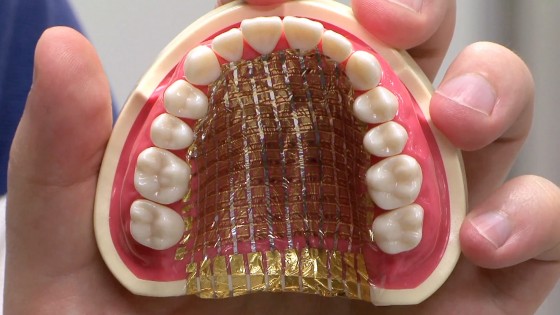
Robohub.org
World’s lightest and thinnest circuits pave the way for ‘imperceptible electronics’

Researchers from Asia and Europe have developed the world’s lightest and thinnest organic circuits, which in the future could be used in a range of healthcare applications.
Lighter than a feather, these ultrathin film-like organic transistor integrated circuits are being developed by a research group led by Professor Takao Someya and Associate Professor Tsuyoshi Sekitani of the University of Tokyo, who run an Exploratory Research for Advanced Technology (ERATO) program sponsored by the Japan Science and Technology Agency (JST), in collaboration with Siegfried Bauer’s group at the Johannes Kepler University (JKU) Linz, Austria.
This prototype device is a touch sensor featuring a 12×12 array of sensors on a 4.8 cm x 4.8 cm circuit. It is made up of two layers, an integrated circuit layer and a tactile sensor layer.
“The new flexible touch sensor is the world’s thinnest, lightest and people cannot feel the existence of this device. I believe this development will open up a wide range of new applications, from health monitoring systems, wearable medical instruments, and even robotic skins in the future.”
The circuits are extremely lightweight, flexible, durable and thin, and conform to any surface. They are just 2 microns thick, just 1/5 that of kitchen wrap, and weighing only 3g/m^2, are 30 times lighter than office paper. They also feature a bend radius of 5 microns, meaning they can be scrunched up into a ball, without breaking. Due to these properties the researchers have dubbed them “imperceptible electronics”, which can be placed on any surface and even worn without restricting the users movement.
The integrated circuits are manufactured on rolls of one micron thick plastic film, making them easily scalable and cheap to produce. And if the circuit is placed on a rubber surface it becomes stretchable, able to withstand up to 233% tensile strain, while retaining full functionality.
“This is a very convenient way of making electronics stretchable because you can fabricate high performance devices in a flat state and then just transfer them over to a stretchable substrate and create something that is very compliant and stretchable just by a simple pick and place process.”
With the development of these plastic electronics, the possibility for flexible, thin, large area electronics has been realized. In the future, the group would like to expand the capabilities of these circuits.
The results of this research were published in the July 25, 2013 issue of the journal Nature.
tags: c-Research-Innovation, cx-Health-Medicine, Sensing




